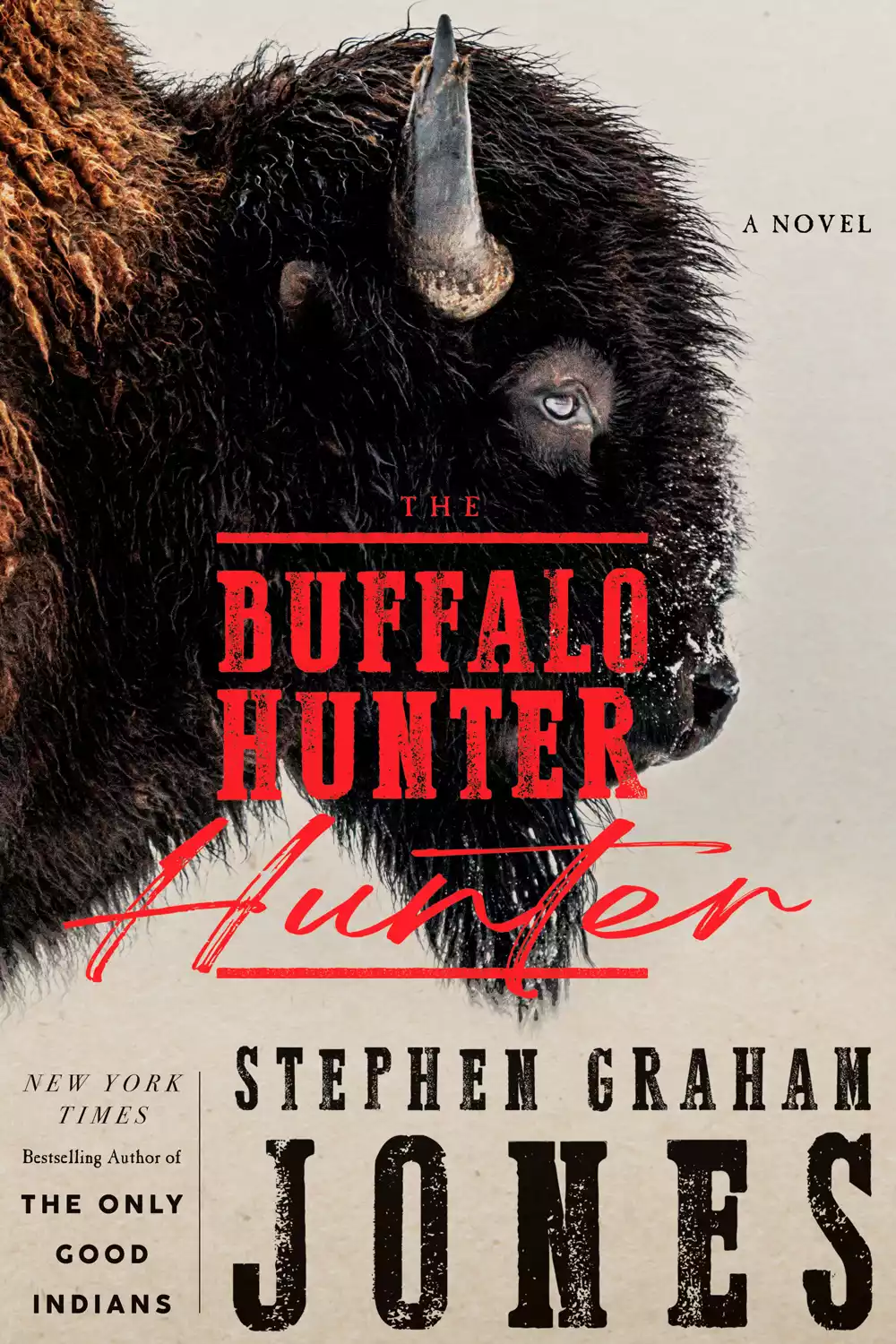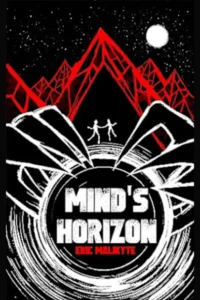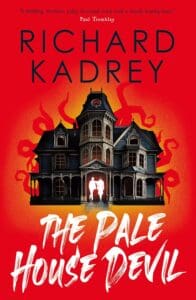
Synopsis
A chilling historical horror set in the American west in 1912 following a Lutheran priest who transcribes the life of a vampire who haunts the fields of the Blackfeet reservation looking for justice.
Etsy Beaucarne is an academic who needs to get published. So when a journal written in 1912 by Arthur Beaucarne, a Lutheran pastor and her grandfather, is discovered within a wall during renovations, she sees her chance. She can uncover the lost secrets of her family, and get tenure.
As she researches, she comes to learn of her grandfather, and a Blackfeet called Good Stab, who came to Arthur to share the story of his extraordinary life. The journals detail a slow massacre, a chain of events charting the history of Montana state as it formed. A cycle of violence that leads all the way back to 217 Blackfeet murdered in the snow.
A blood-soaked and unflinching saga of the violence of colonial America, a revenge story like no other, and the chilling reinvention of vampire lore from the master of horror.
Review
Imagine, just for a moment, that whilst renovating a building, you discover an old journal. Not just any old journal, but a journal from your very own great-grandfather. And contained within this journal, isn’t the thoughts of a turn-of-the-century gentleman, but a story within a story, a Russian dolls nest of horror and unimaginable events. A story of bloodshed, wanton and destructive. A tale both lucid and yet seemingly ethereal, charting the events of one man’s life across the plains of Montana, a man who has no place, rejected by both the white man and his own people. But this man’s story is more than just a tall tale; it’s one of revenge. And when seeking revenge, a vampire has all the time in the world to wait.
And so Stephen Graham Jones, author of the award-winning novels The Only Good Indians & The Indian Lake trilogy, is back with another masterpiece, this time tackling the vampire mythos and turning it into something wholly original and new. SGJ harkens back to the great vampire novels that came before it – Interview With A Vampire, Dracula, Carmilla – but using an epistolary narrative form to tell this tale spanning multiple generations, and over 2 centuries of violence. Etsy Beaucarne, one of our three storytellers and chroniclers, is of the present day, having found her great-grandfathers journal in the walls of a building that is being renovated. Desperate for academic success, she begins to transcribe this book. From here, and for the biggest portion of this novel, we then read the journal enters of her descendant, Arthur Beaucarne, a Lutheran priest, as in the spring of 1912, he is visited numerous times by a Blackfeet Native American, a man by the name of Good Stab. Good Stab’s story is then told through first person narration, as he “confesses” his frankly wild life to Arthur.
The interactions between Arthur & Good Stab, which are always seen from Arthur’s POV/writings, are tense from the beginning. I never knew which direction this was going to go, and to be honest, for the first 200+ pages of this story, I wasn’t sure what exactly was going on or why. This isn’t a bad thing; normally I wouldn’t like what feels so meandering, but SGJ’s writing is so immersive, and all three narrative throughlines are so unique from each other, it becomes so incredibly readable because you are fully encompassed in the journey. And as each layer of both Arthur’s & Good Stab’s stories unfold – when both characters pipes are full – you are pulled along for more. Etsy’s POV is very familiar and modern; Arthur has this almost romantic idea of Victorian style language, and he writes with a long-winded hand. Good Stab is wholly unique from anything I’ve experienced before, and his tale can be confusing (for me at least it was) to comprehend at first. This is book you cannot read fast. SGJ does not hold your hand. Instead, he wants you to dive deep straight in and work things out, puzzle them out until you have your own grip on the events being told between these pages.
Because this is a very deeply thematic novel. It demands to be read slowly, and each section becomes its own learning curve. It’s almost best to read one POV until it switches to another, then break there and think about what has just been said. This story explores the bloody takeover of Native peoples lands, of the violence found in colonial America, how this was built on the wholesale destruction of the lands, peoples, and nature held within. It’s a blood-drenched story of vengeance, of being an outcast, of metamorphosis. It’s also a story that you have to trust in the process. The writing is of a quality that will keep you reading anyway, but as you move through this book, each of these themes and more are hit upon in symbolism, in allegory, and come the final 150 pages of this story, SGJ smashes it into another gear. The final confrontation and closing moments of Arthur’s & Good Stab’s respective stories are up there with some of the best one-on-one face offs I’ve ever read.
Arthur & Good Stab are these two opposites, yet so incredibly alike, and their juxtaposition to one another only becomes more interesting as the book carries on. Good Stab, being a vampire (more on the vampire stuff shortly), dressed in his own set of priest blacks, has an insatiable thirst for blood, a curse that causes him afflictions to the suns light, all of which he cannot control. Arthur, however, has his own gluttony, but it’s entirely something within his control. Yet he always chooses not eat, and eat of the food given to him by his parish he will. I see them as two sides of the same coin.
Now, the vampire shit; I will keep it short as I want you to experience this yourself. This shit is so original and so cool! Vampirism here is truly a curse. There is no romanticism here; Good Stab suffers physically and emotionally. For him, there is no lust, no castle with thralls and a gorgeous lover. There is only rejection, from his own people, from the people who took his land, from everything. And what he must do to survive is pure horror. SGJ said that he wanted this to not feel like other vampires, and the vampire lore we have come to expect. Instead, it had to feel like Good Stab was just scraping by at all times, and that this curse was always there to cause pain. It’s heartbreaking, seeing what he goes through, despite the fact that some of the things he does are monstrous – justifiably or not, that is for you to decide.
Please note: this is not the story for those faint of heart. It is very gory, very bloody, and there’s lots of animal stuff in this one. It’s never gratuitous nor is it done for shock value. It is always in service to the themes, to the characters, to the story at large.
In short, The Buffalo Hunter Hunter is a masterwork of revenge fiction, coated with one of the most original spins on the vampire I’ve ever experienced. Stephen Graham Jones writes with such confidence and immersion, never holding your hand in this book that is supposed to challenge you. It was my first SGJ novel, and it definitely is not going to be the last. The Buffalo Hunter Hunter is out now, and it’s going to be remembered as a classic.
Good Stab has a story to tell. So you had better listen.
With thanks to Titan Books for sending me an ARC and a finished copy of this book in exchange for an honest review. I am very grateful to have received such a wonderful book!











Leave a Reply